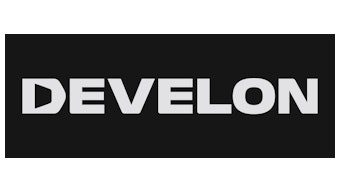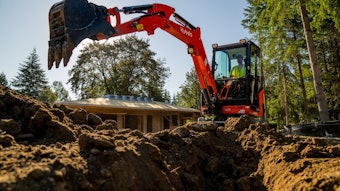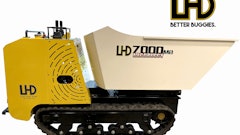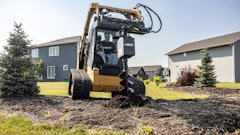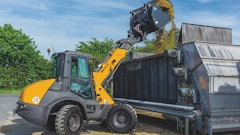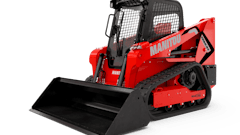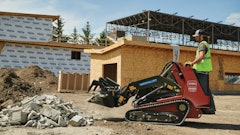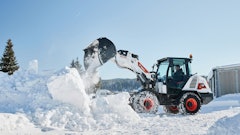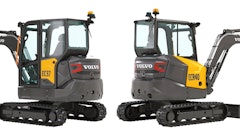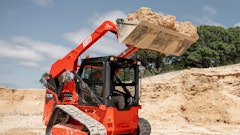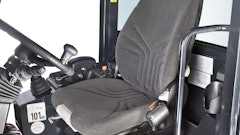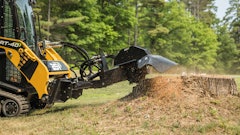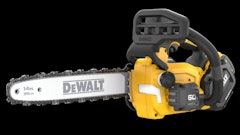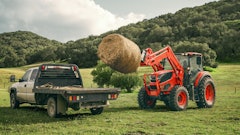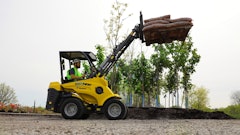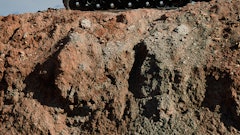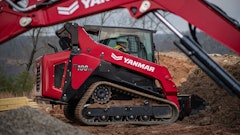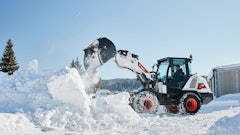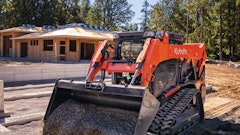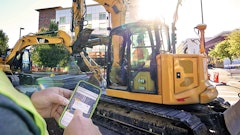
The landscaping and construction equipment category, which includes mini skid-steers, compact utility loaders (CULs) and compact tool carriers (CTCs), has experienced a massive expansion in machine sizing and performance in recent years. Contractors looking to add a mini skid-steer to their fleet have many models to choose from.
So, where should contractors start with their search? And how should they prioritize all the machine specifications and performance-enhancing features?
First, start with evaluating machine size and then think about operating capacities and look at specific qualities.
Since mini skid-steers are used in so many different types of applications, there are several variables that need to be considered, depending on how the machine will be used.
Mini skid-steer sizing
Contractors should start by determining the right size of loader for their needs, because if a machine doesn’t fit in the space, all its other specifications don’t matter.
One of the main reasons the mini skid-steer product category was created was that people were looking for ways to replace manual labor in areas where larger skid-steer loaders and compact track loaders were too big to fit in. So, manufacturers have placed a lot of attention on designing machines that can fit through 42-inch openings: a standard backyard gate size. Buyers need to know the width of their working area and how much access space they have when transferring the machine to the jobsite. Of course, if space isn’t usually an issue for someone’s work, they will have a wider range of models to choose from.
Mini skid-steer operating capacity
After the machine’s physical dimensions are determined, it’s time to turn attention to its performance.
Since the most common tasks of mini skid-steers involve lifting and hauling material, operating capacity is the first place to start. In today’s mini skid-steer product category, operating capacities range from 500 to 3,000 pounds. Also, contractors focus their attention on finding equipment that optimizes the balance between the physical size of the machine and its lifting performance.
If the type of work a contractor performs doesn’t involve lifting heavy material, consider looking at smaller units that excel in other ways that are important to them. Those lifting heavy material frequently should look at units that lift and carry the most without limiting access to spaces they need to go.
Lift path
On the topic of lifting performance, a mini skid-steer’s lift path may be important in a contractor's type of work. Many manufacturers offer mini skid-steer models with a radial or vertical lift path.
Units with a radial lift path are a more economical choice, but, if the type of work they're doing involves loading, unloading, dumping material into the back of a truck or feeding wood onto a brush chipper infeed table, think about a mini skid-steer with a vertical lift path.
Auxiliary hydraulics for attachments
If all a contractor ever uses on the mini skid-steer is a bucket, machine auxiliary hydraulics capacity may not factor into the decision, but, if the type of work done regularly involves using hydraulically driven attachments like trenchers, augers, soil cultivators, Harley rakes or similar attachments, contractors need to consider how well a mini skid-steer can supply hydraulic pressure for optimal attachment performance.
Review each unit’s hydraulic system numbers when comparing performance. Hydraulic specifications listed by mini skid-steer manufacturers usually include high-flow and low-flow auxiliary hydraulic capabilities, as well as tank capacities. If contractors are running attachments that require high flow, they want to choose a mini skid-steer with increased high-flow specifications and tank capacities.
It is important to choose a mini skid-steer with optimized hydraulic systems designed to deliver the right flow to the attachment without sacrificing other machine functionality.
High-quality equipment
When done comparing the specs, it’s always a good idea to talk with an equipment dealer about the mini skid-steer under consideration. Demo a few units to dial in the right machine.
During this stage of the process, pay attention to the machine build quality and the manufacturer’s attention to detail. Contractors likely already know what brands have a good reputation based on conversations they’ve had with their peers, but they should make sure they visually see it for themselves. Look over the controls and service accessibility. Ask which setup is the most straightforward to operate and service.
Also, contractors should ask the dealer about their service and parts offering to support them after purchase.

